Description
Introduction to Isolated Footing Design
Isolated footings are a critical component in structural engineering, serving as the base that supports individual columns in a building. These footings are designed to distribute the load from the column evenly to the underlying soil, ensuring that the structure remains stable and secure. The purpose of Isolated Footing Design is not only to support vertical loads but also to resist lateral forces, contributing to overall structural integrity. Their design is influenced by several key factors that must be taken into account to achieve optimal performance.
The first consideration in isolated footing design is load calculation. This involves determining the weight of the column and any additional loads that the structure will impose, including live loads and environmental loads such as wind or seismic activity. Accurate load calculations are essential to ensure that the footing can adequately support the forces applied to it without failure.
Another crucial aspect to consider is the soil conditions at the site. Soil type, bearing capacity, and moisture content play significant roles in the performance of an isolated footing. Engineers must conduct thorough geotechnical investigations to assess the properties of the soil, ensuring that the design is suited to the specific site conditions. A solid understanding of the soil mechanics involved will help in selecting the appropriate size and depth for the footing.
Compliance with relevant standards, particularly ACI 318, is also vital in isolated footing design. The ACI (American Concrete Institute) outlines guidelines and specifications that must be adhered to in order to ensure the safety and reliability of structural elements. A systematic approach to footing design, where all of these factors are considered cohesively, is essential for achieving safe and effective structural solutions. Understanding these principles lays a foundation for successful isolated footing design, ensuring that buildings can sustain the forces acting upon them throughout their lifespan.
Overview of ACI 318 Code Requirements
The American Concrete Institute (ACI) 318 provides comprehensive guidelines that govern the design and construction of structural concrete. Among the various elements addressed, isolated footings play a crucial role in ensuring the stability and load-carrying capacity of buildings. Compliance with ACI 318 is essential for engineers and designers to assure safety and performance in structural systems.
One of the fundamental principles outlined in ACI 318 is the importance of accurately calculating the loads imposed on footings. This includes both dead loads, which are permanent static forces, as well as live loads, which are variable and can change over time. Section 13 of the code emphasizes the necessity of incorporating factors such as soil characteristics and environmental conditions into the load calculations to adequately assess the footing’s performance.
Additionally, ACI 318 specifies key equations to facilitate the design process of isolated footings. For instance, engineers must utilize the moment and shear equations to determine the maximum stresses that the footing will encounter. These equations provide a systematic approach to assess the structural integrity of the footing while considering various loading scenarios.
The code also outlines specific criteria for determining the dimensions and reinforcement requirements of footings to effectively distribute loads to the underlying soil. Elements such as width, depth, and the type of reinforcing steel must meet the stipulated criteria to ensure adequate performance under the design loads.
In summary, understanding ACI 318 code requirements is vital for the design of isolated footings. Familiarity with the specific design principles, load calculations, and reinforcement methods stipulated by the code can assist engineers in creating safe and effective footing solutions. Adhering to these standards helps mitigate risks and enhances the durability of concrete structures, reinforcing the significance of ACI 318 in the engineering field.
Features of the Isolated Footing Design Excel Sheet
The Isolated Footing Design Excel sheet is a versatile tool that significantly streamlines the design process for structural engineers and professionals in the field. One of the primary features is its user-friendly interface, which includes straightforward input fields for essential parameters such as soil characteristics, load data, and footing dimensions. This carefully designed layout allows users to perform calculations efficiently without the need for complex manual input, thereby reducing the potential for errors and enhancing overall productivity.
In addition to its ease of use, the Excel sheet incorporates various built-in functionalities that cater to diverse design scenarios. For instance, users can easily modify the input fields to accommodate different soil properties, such as bearing capacity and settlement criteria, which are crucial for the accurate design of isolated footings. The tool also allows for the inclusion of multiple loads, including dead loads, live loads, and lateral loads, reflecting real-world conditions. This flexibility ensures that engineers can adapt the sheet to a range of projects, from residential structures to larger commercial developments.
Another significant feature of the isolated footing design Excel sheet is its alignment with ACI 318 guidelines. The sheet incorporates standardized formulas and provisions that uphold these standards, making it a reliable resource for ensuring compliance during the design process. By following these guidelines, users can produce safe and effective designs that meet industry acceptance criteria. Overall, the Isolated Footing Design Excel sheet not only simplifies complex calculations but also enhances the accuracy and reliability of footing designs, making it an indispensable asset for civil engineering professionals.
How to Use the Free Download Excel Sheet
To effectively utilize the Isolated Footing Design Excel sheet based on ACI 318, users will first need to download the file. Ensure that your system has a compatible version of Microsoft Excel installed, as this is essential for properly functioning the spreadsheet. Navigate to the designated download link on the blog post and click to initiate the download process. The file will typically be saved in your default downloads folder. Once the download is complete, locate the file and double-click to open it in Excel.
After opening the Excel sheet, users should first familiarize themselves with the layout. The spreadsheet contains various sections, including input fields for the design parameters necessary for the isolated footing calculations. It is crucial to enter accurate values into all required fields, such as soil bearing capacity, applied loads, and footing dimensions. These inputs are vital as they will directly influence the design outputs generated by the sheet.
Once all necessary data has been entered, users can proceed to review the output sections. The Excel sheet is designed to calculate various design parameters, including factors like bending moments, shear forces, and the required reinforcement details. The outputs will update automatically as the input values are changed, allowing for a dynamic analysis of different design scenarios.
In case of any issues while using the sheet, it is advisable to check for common mistakes, such as incorrect data entries or incompatible units. A clear understanding of the calculations being performed can also aid in troubleshooting. Users can refer to the help documentation included within the Excel file or seek guidance from additional resources if needed. Always ensure that the latest version of the sheet is being used to access all available features effectively.
Conclusion and Additional Resources
Utilizing the isolated footing design Excel sheet based on ACI 318 standards offers numerous advantages to civil and structural engineers. This tool simplifies the design process, thereby enhancing efficiency and accuracy while ensuring compliance with established codes. The automated calculations provided within the sheet minimize the likelihood of errors that can occur during manual computations. Moreover, the sheet comprehensively addresses various design scenarios, allowing for adaptability based on specific project requirements.
Adhering to ACI 318 standards is essential in maintaining the structural integrity and durability of a design. The guidelines outlined in ACI 318 provide a framework for ensuring that all loads, environmental factors, and material properties are considered during the design process. By integrating the isolated footing design Excel sheet into your workflow, engineers can confidently ensure that their designs are reliable and per best practices outlined in these standards.
For further learning and exploration, various additional resources are available. These include detailed design examples that illustrate the application of ACI 318 in real-world scenarios, as well as software alternatives that can complement the functionality of the Excel sheet. Publications providing extensive insights on footing design and structural analysis can also enrich one’s understanding of these concepts.
Best practices in footing design should be emphasized, including thorough site assessments, accurate load calculations, and consideration of soil properties. By consistently applying these principles, engineers will enhance their design outcomes and contribute to their structures’ overall safety and longevity. For more in-depth information, links to relevant articles, case studies, and educational materials will be provided, enabling professionals to expand their knowledge and skills in structural design.


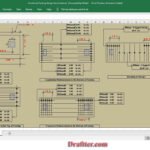
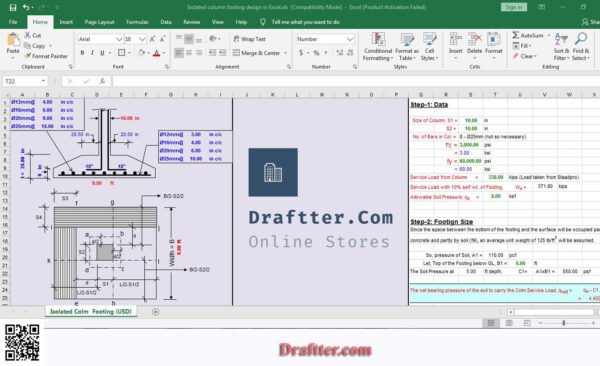
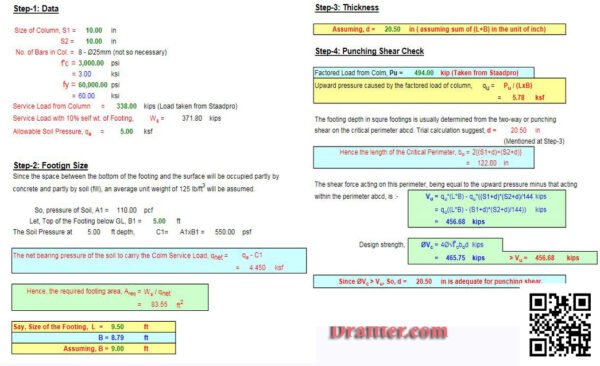



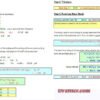




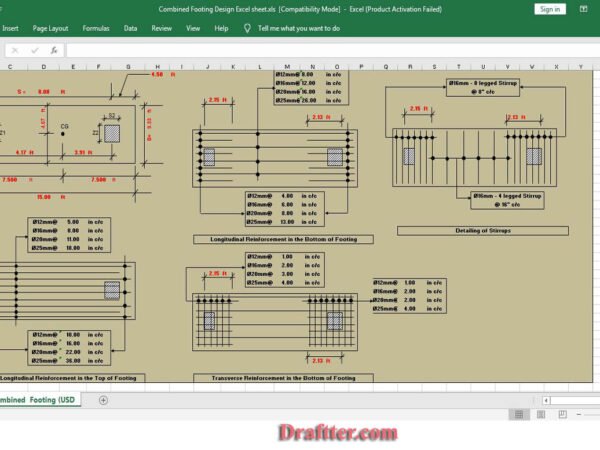

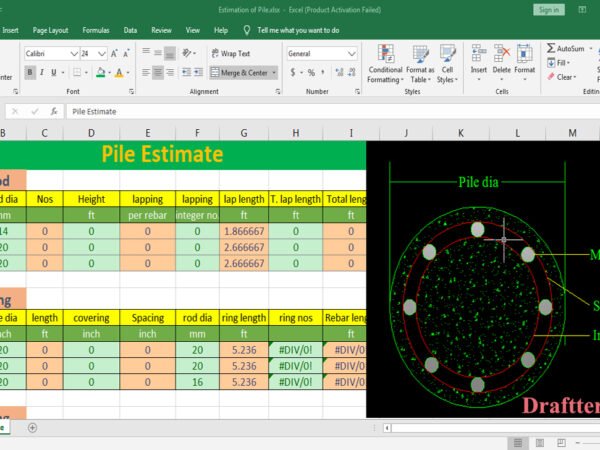
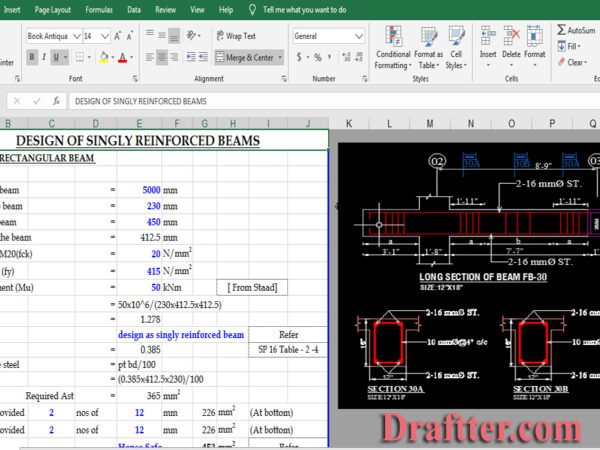
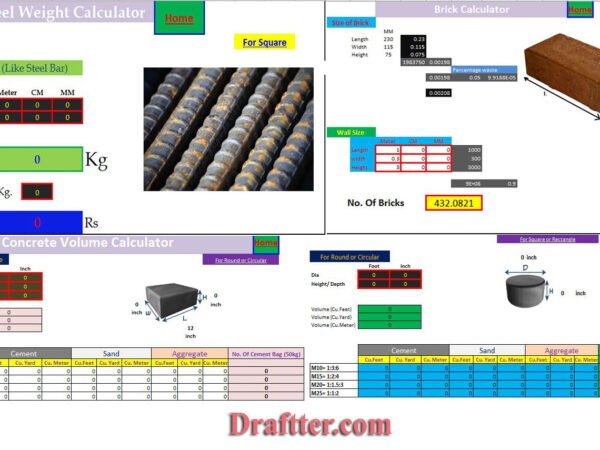
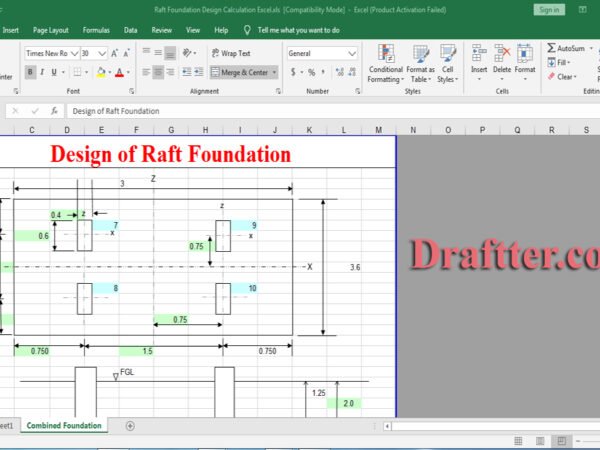

Reviews
There are no reviews yet.